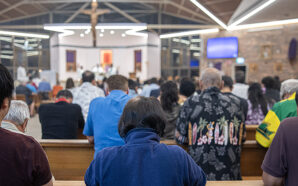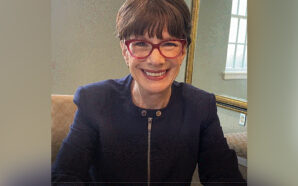Easter Sunday of the Resurrection of the Lord
Readings: Acts 10: 34, 37-43; Psalm 117(118):1-2, 16-17, 22-23; Colossians 3:1-4; John 20:1-9
31 March 2024
REFLECTING ON THE READINGS THROUGH ART with Mgr Graham Schmitzer
The Resurrection – Piero della Francesca (c. 1415–1492)
“The Resurrection” (c. 1460s), Fresco, 225cm × 200cm. Museo Civico, Sansepolcro, Tuscany, Italy. Public Domain.
Many Catholics readily walk the 40 days of Lent. At the Church’s urging, they embrace the penitential practices of prayer, fasting (in its many forms), and almsgiving. They follow the thrust of Lent’s pedagogy as it evolves in the Scripture readings of the Mass lectionary: a review of what accepting the Covenant—spelled out in the Ten Words, the Commandments— means for our living, and a meditation on Christ’s passion and death and on what that means for our lives. Easter Sunday is the climax.
But the liturgy does not end there. Easter Day is actually celebrated for eight days—the Octave— and then Easter’s joy spills over for another 42 days. What the Church is saying is that the Easter event is so mind-boggling that we cannot possibly comprehend its mystery in a day, or even eight days. The Church spends 50 days pondering what is actually the climax of human history and the Omega point of human evolution.
Easter is not just the commemoration of a man rising from the dead—that would make it little different from the resurrection of Lazarus. Easter must mean something much more. What difference does it make for my life? How does it strengthen my faith?
In the common mind, Easter has never “taken off” like Christmas. And yet Christmas means little without Easter. We spend months preparing for Christmas—the greetings we send, the gifts we buy, the food we eat. Yet, none of that preparation precedes Easter. We make sure the children receive their eggs, we eat a hot cross bun on Good Friday, and we set out to enjoy the four-day break. Very few sit down to work out what it is really all about. It is even typified in the English world by our using a pagan greeting. Eastre was Old English for the dawn-goddess, derived obviously from the word “east”. Other languages wish you a “Happy Passover”.
As I said, the Easter event is so profound the Church spends 50 days in reflection. And even the good people who take Lent seriously do not return to Mass for the 50 days, and not even for the Easter Octave. We would do well to try to change that pattern in order to strengthen our faith.
In his wonderful reflection on the station churches of Rome (the ancient custom of the popes and people of Rome celebrating the Lenten Masses in a different church each day), George Weigel follows the thought of the theologian Hans Urs von Balthasar in saying that Christians are dangerous because of their belief in the Resurrection. “Right from the beginning,” Balthasar writes “Christianity was seen as a total, highly dangerous revolution” (Roman Pilgrimage, 2013). Once it challenged the gods of Rome; now it challenges the skepticism of modern culture and its moral offspring, relativism. Post Christian culture is frightening because it accepts no “givens”. Reality, it says, is what we make it.
We need to reflect on the Easter event. It contains the core meaning for our existence as humans. The ancients used to think life was a treadmill from which we never escape. Christianity is linear—we are on a journey to a destination. Call it “heaven”, but even heaven can be just a word. Christ’s resurrection “constitutes an ‘evolutionary leap’. In Jesus’ resurrection, a new possibility of human existence is attained that affects everyone, and that opens up a future, a new kind of future for mankind” (Pope Benedict XVI, Jesus of Nazareth, Holy Week).
“An evolutionary leap”—what Charles Darwin could have made of this if he had been a believer! In the Risen Christ, now seated at his Father’s right hand, humanity is intimately united to the Divinity. St Augustine pithily wrote: “God became man so man could become God” (Sermo 13 de Tempore, PL 39, 1097–1098). St Paul rightly declares that the Resurrection affects every human being. “If the dead are not raised, then Christ has not been raised…. But in fact, Christ has been raised from the dead, the first fruits of those who have fallen asleep” (1 Cor 15:16, 20). When I contemplate the Resurrection, I am contemplating my own destiny. Enough reason to cry, “Alleluia!”
Such is the Divine Pity. God would not allow humanity to destroy itself. From the moment of the Original Sin, God set in motion the Redemption. In the true meaning of the word, he would buy us back. The price would be the precious blood of his Son who would willingly live our life and die our death. Such is my worth. “Drink the blood that is the price of your redemption, so that you may never count yourselves worthless” (St Thomas Aquinas, in festo Corpus Christi, opus. 57).
The fact that this fresco, The Resurrection, still exists is due to the bravery of a British artillery officer, Anthony (Tony) Clarke, who, during the Second World War, disobeyed orders to shell the town of Sansepolcro in Tuscany. His diary tells us of his shock at the total destruction of Monte Cassino (by the allies). An art lover, he had read Aldous Huxtley’s 1925 essay describing The Resurrection: “It stands there before us in entire and actual splendour, the greatest picture in the world.” It was later discovered that the Germans were actually retreating from the area, so the bombardment had not been necessary. At the time when Clarke ordered the shelling to stop, he was unaware of this information. The townspeople, not knowing the full situation, celebrated Clarke as a hero, and even named a street in his honour.
Sansepolcro (the Holy Sepulchre) gets its name from the two saints who founded the town in the 9th century: Arcano and Egidio. They had just returned from Jerusalem with a large stone from the Sepulchre as a relic. The fresco at which we are gazing was painted in the 1460s by Piero della Francesa on the interior wall of the Residenza—the town’s communal meeting hall. In the days when the Italian city-states were continually warring, Sansepolcro had been under the control of nearby Florence, but had recently won its freedom. To the people, it was almost a resurrection. Piero has paid tribute to the town’s relic by including it in the lower right-hand corner of the fresco.
Piero was also a mathematician and geometer. By examining his fresco, it becomes clear that the artist has intentionally arranged the figures in a way that forms an isosceles triangle. This triangle starts from the top of Christ’s head, passes through the soldiers, and reaches the lower corners of the painting. Additionally, the artist has placed the trees in the background in an almost symmetrical manner around Jesus. However, there is a symbolic contrast between the flourishing young trees on the right side and the bare trees on the left side—an allusion to the life Christ’s resurrection brings us.
Piero depicts Christ’s tomb as a classical sarcophagus. In the painting, the Saviour is shown holding a triumphal banner with a cross on it, symbolising his victory. The positioning of his left leg on the tomb’s parapet suggests the moment of his resurrection. In the painting, we see the four soldiers from a lower perspective, while the face of Christ is painted directly facing us. Piero has deliberately done this for artistic impact and visual interest. Experts tell us that the soldier in the brown armour, second from left, is actually a self-portrait of the artist. The third soldier is still holding the lance with which he pierced Christ’s side. The wound is obvious.
In later life, Piero was summoned to Rome by Pope Nicholas V to paint frescos in the Basilica of Santa Maria Maggione. Before he died in 1492, he wrote a treatise: On Perspective in Painting.
Katherine Stone MGL is a Missionaries of God’s Love (MGL) sister living in Varroville, NSW. Originally hailing from Tasmania, she joined the MGL Sisters in 2005. Since then, she has lived in Canberra, Melbourne and Sydney, studied theology and spiritual direction, and has done a term as formator. These days, her main ministries are spiritual direction, talks and teaching, and retreat giving. She is also the MGL sisters’ vocations director. Her passion is Jesus—as may be apparent from her ministry, she loves talking about him and to him, and hearing others share their own experiences of him.
Monsignor Graham Schmitzer is the retired parish priest of Immaculate Conception Parish in Unanderra, NSW. He was ordained in 1969 and has served in many parishes in the Diocese of Wollongong. He was also chancellor and secretary to Bishop William Murray for 13 years. He grew up in Port Macquarie and was educated by the Sisters of St Joseph of Lochinvar. For two years he worked for the Department of Attorney General and Justice before entering St Columba’s College, Springwood, in 1962. Mgr Graham loves travelling and has visited many of the major art galleries in Europe.
With thanks to the Diocese of Wollongong, who have supplied this reflection from their publication, Pietà – Lenten Program 2024. Reproduced with permission.








